24 Hours in Stari Grad: For Those Seeking a More Laid-Back Experience
May 13, 2022 – Come with me as I explore different facets of this rustic jewel in this 2-part series, as we spend 24 hours in Stari Grad, one of Hvar's most popular towns.
With an average of over 2715 hours of sunlight a year, the Croatian island of Hvar offers plenty of fun in the sun. From its series of natural wonders including fresh springs, fruit orchards, lavender fields, and award-winning vineyards, to the allure of its world-renowned nightlife, Hvar is guaranteed surpass even the highest of expectations.
A brief history of Hvar
Did you know that the history of Hvar dates back over 5000 years? The earliest inhabitants of Hvar Island were the Neolithic people in 3500 B.C. During the 4th century, Hvar was initially colonized by Greeks, but following the Roman victory in the Second Illyrian War, the island became a part of the Roman Republic.
The island joined the Kingdom of Croatia in the 11th century but eventually fell under Byzantine rule, before becoming a part of the Kingdom of Croatia and Hungary in the 12th century. In 1409, the Venetian Republic regained the right to rule Hvar for over 5 centuries, before it was annexed by the Habsburg monarchy in 1979.
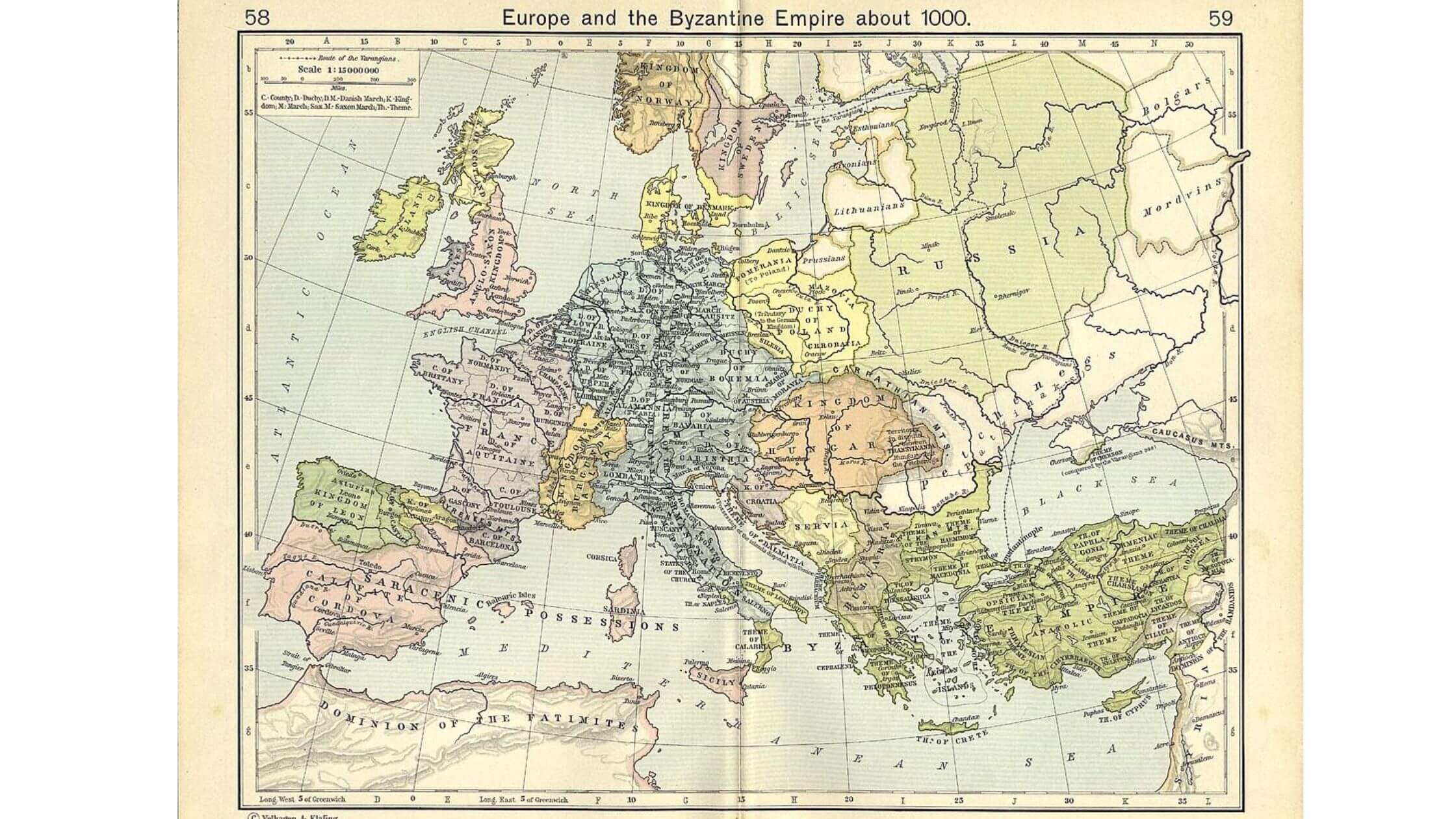
A map of Europe in 1,000 A.D. with the Kingdom of Croatia. (Image: Wikimedia Commons)
Over the next decades, Hvar changed hands a few more times. The French Empire seized the island in 1806 during the Napoleonic wars, before it fell under British rule in 1812. In 1815, Hvar was controlled by Austrians, before it was occupied by the Italian army from 1918 to 1912 under the Kingdom of Yugoslavia. Finally, after the end of WW2 in 1945, it became a part of the People's Republic of Croatia.
Right, that was essentially Hvar’s 5,000-year history, brutally squeezed into 3 short paragraphs, but since we only have 24 hours, let’s begin a full day of activities in Stari Grad. Not only does this town attract a more relaxed clientele, as you’ll see, it’s also much cheaper than neighboring Hvar town!
8.30 a.m - 10.30 a.m.
The majority of Hvar visitors begin their trip at the Split ferry terminal. In Summer, the state-owned Jadrolinija ferries or catamarans run regular service lines to 3 different ports on Hvar: Split-Hvar, Split-Jelsa, and Split-Stari Grad.
From Split-Hvar, a catamaran runs almost every other hour, with the earliest ferry leaving Split at 8.30 a.m. Prices for the catamaran are the same for both children and adults, at 110 kuna (€14.50) one way. The Split-Jelsa catamaran first detours to Bol on Brač island (so the line really is Split-Bol-Jelsa), and only runs once a day, departing Split at 4.30 p.m. Tickets are 63 kunas (€8.40) per adult and 30 kunas (€4.00) for children between 3-12 for a single trip. Do note that the catamarans are foot/pet traffic only!
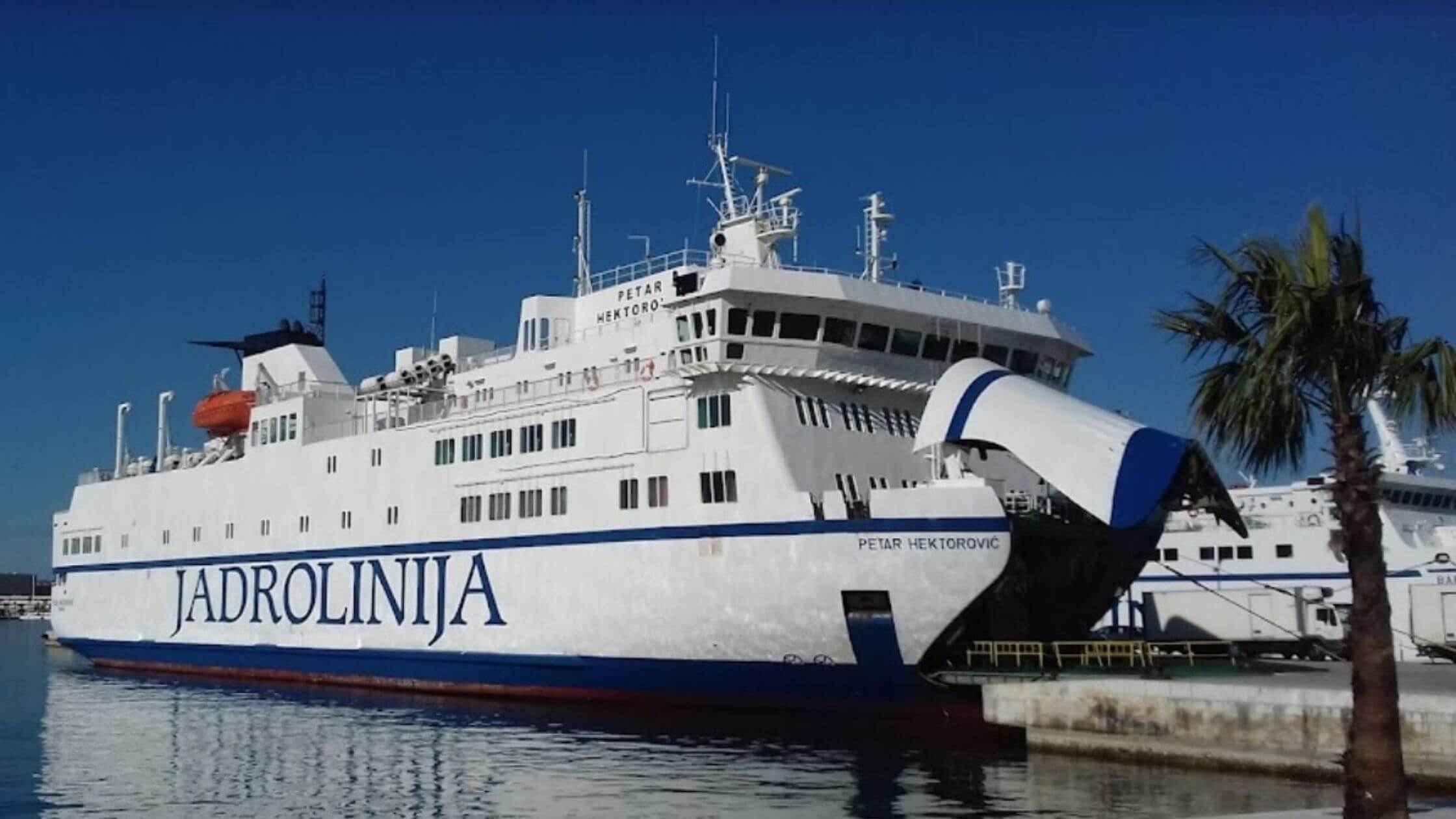
(Image: Stipo Rajic/Screenshot)
Finally, we have the ferry line that will kick start our trip from Split-Stari Grad. Leaving Split as early as 1.30 a.m., the Split-Stari Grad ferry service runs 7 times a day at the peak of the season. Since it’s a ferry, you’ll be able to drive your vehicle on board so if you’ve rented a car in Split and intend to drive it over Hvar Island, this will be your port of call as well. Prices start at 55 kunas (€7.40) for an adult and 27.50 kunas (€3.70) for children 3-12, for a one-way journey.
10.30 a.m. - 11.30 a.m.
A 2-hour ferry ride later and you’ve arrived in Stari Grad, Hvar Island. The first thing to do is to drop your bags off at your accommodation and make a beeline to Stari Grad’s palm-lined Riva.
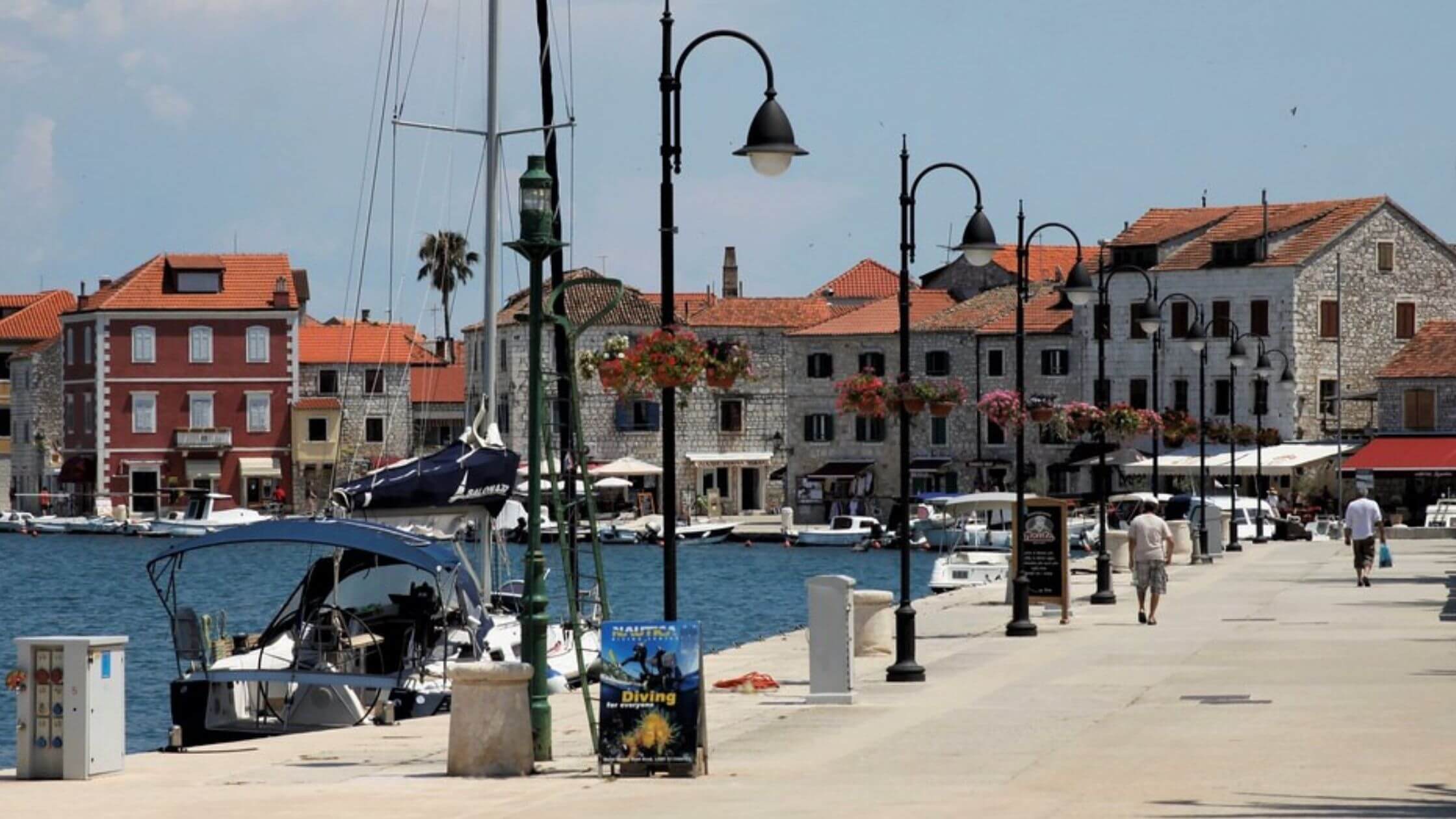
There's no better place to relax and let your mind wander. (Image: Pixabay)
Surrounded by Venetian Renaissance buildings, the Riva is the heartbeat of the city. Here, you’ll find everything you need including cafes, bars, restaurants, souvenir stands, boutiques, and grocery stores. It’s perfect for a spot of people watching while snacking on some Burek (Croatian flakey pastry filled with a combination of cheese, meat, and spinach) with your coffee or Aperol Spritz (I mean, you’re on vacation, and its noon somewhere, right?)
11.30 a.m. - 1.30 p.m.
With your energy levels renewed, time to do some exploring! For 20 kunas (€2.65), head on into Tvrdalj fortress, the summer residence of Croatian Poet Petar Hektorović (1487-1572). Cocooned in this oasis, Hektorović produced some of his finest poetic works on Hvar’s fishermen such as – Ribanje i ribarsko prigovaranje, 1568, eventually becoming a vital figure in Croatian literature during the Renaissance period.
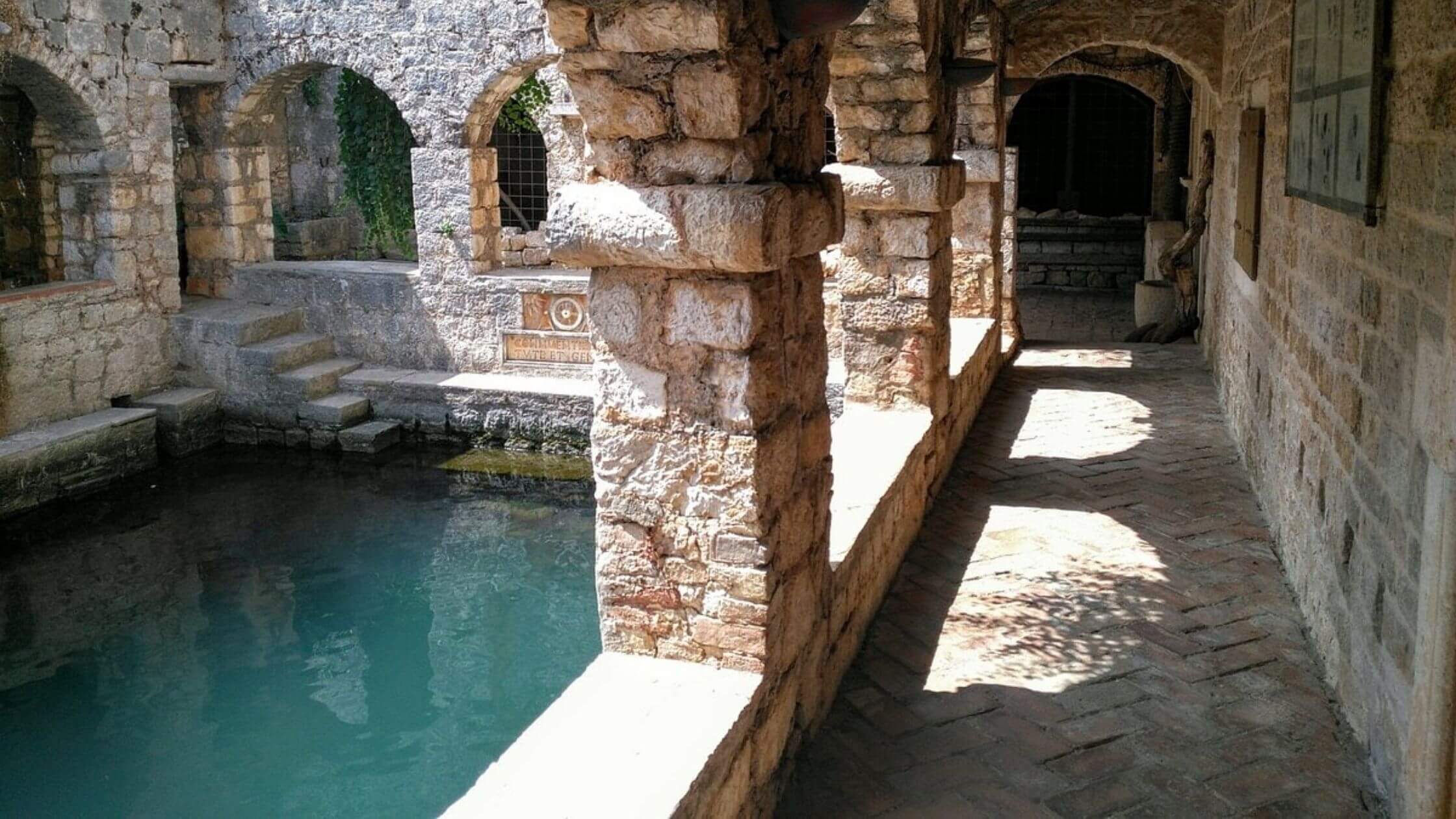
Step inside the calm of Tvrdalj fortress. (Image: Alain C.)
In the vicinity are also a series of churches such as the Church of St. Stephens, built-in 1605 on the same site of a previous cathedral that was destroyed in 1571 during a Turkish invasion. There is also the church of St. John which houses archaeological remains of the original building that dates to the 5th or 6th century, and the church of St. Petar Muenik and the Dominican monastery that was founded in 1482.

Church of St. Stephens. These churches contain many important artworks by famous Venetian artists which are still on display today. (Image: Rory321)
Make sure to make time for wandering around the backstreets of Stari Grad to admire the architecture and take the opportunity to stop by Škor Square for a series of highly-instagrammable pictures. If Mamma Mia had another prequel (or sequel?), this be an ideal setting with its curved archways, stone houses, shuttered windows, and quaint staircases.
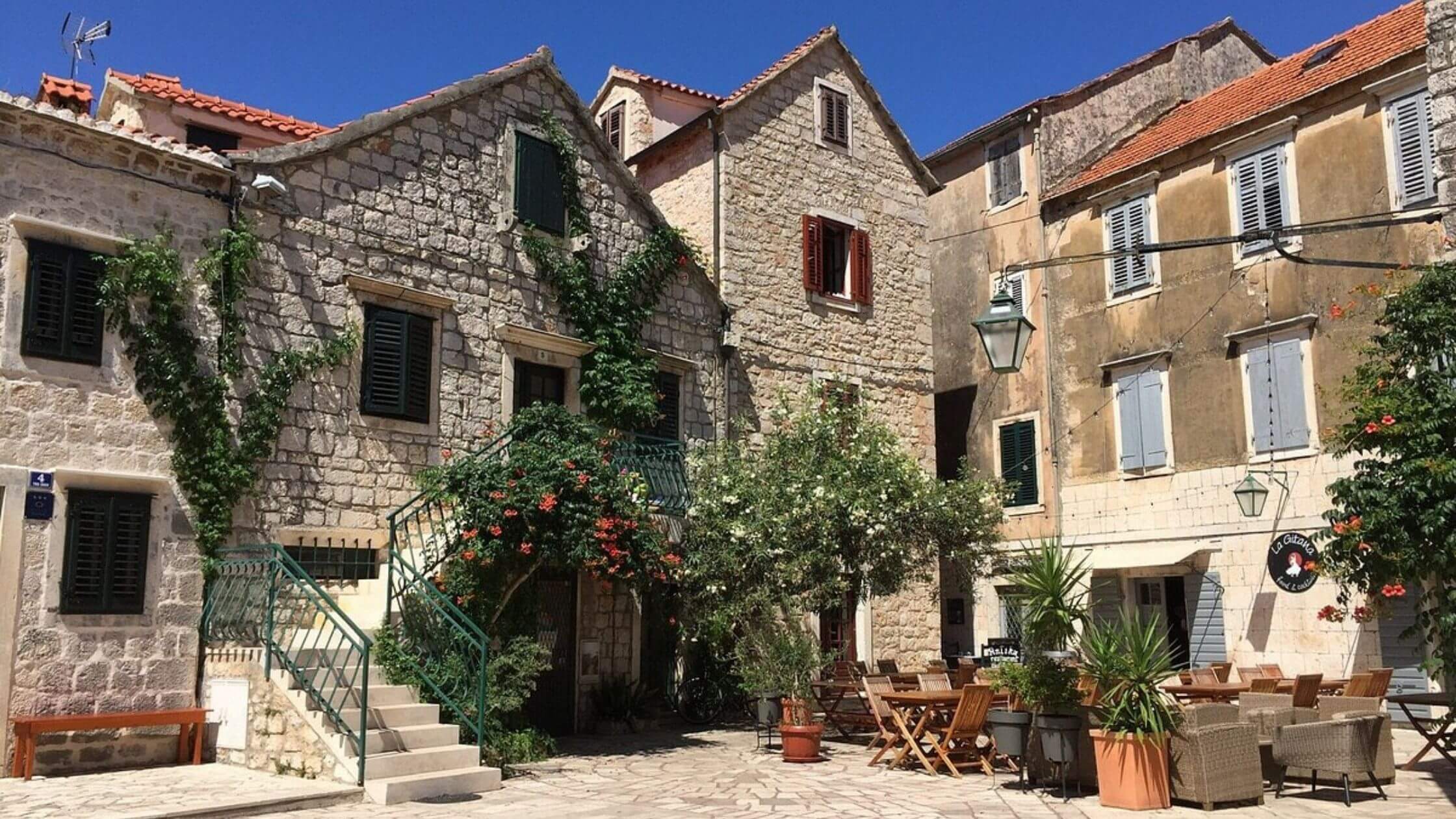
The word škor derives from the word škver, meaning shipyard in the Dalmatian dialect. (Image: Chrissieb94/Tripadvisor screenshot)
Also wander along Srinjo Kola (translated to: Middle Street), one of the busiest and largest streets on Hvar Island during the 1870s and 80s, when maritime trade in the region was at its peak. Once bustling with merchants and traders from all over Europe, Srinjo Kola today has more of a bohemian vibe, housing quaint cafes and traditional souvenir stores. Don’t forget to peek at the ancient Roman mosaic discovered during an excavation last year!
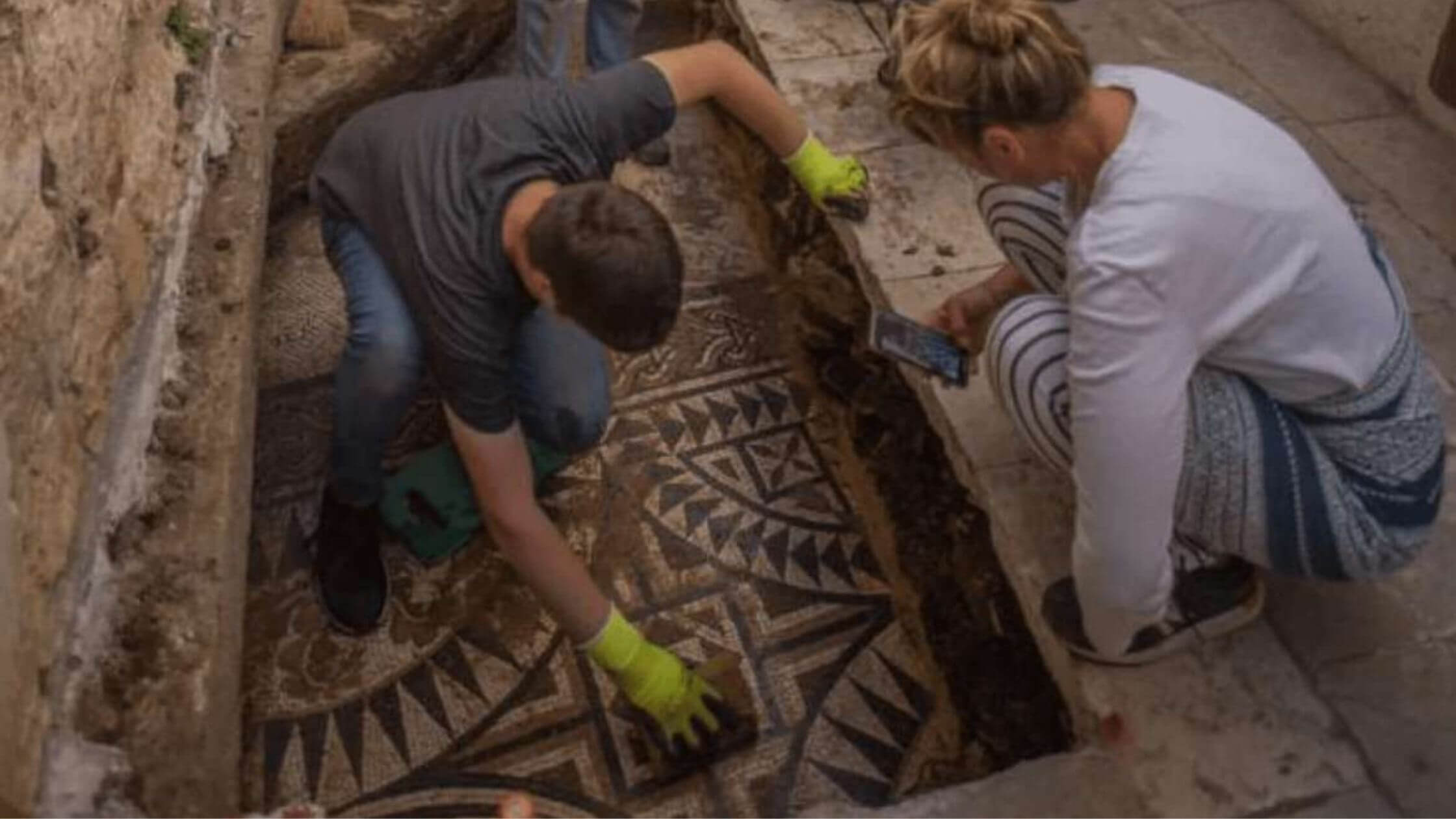
(Image: Vilma Matulic)
1.00 p.m. - 2.00 p.m.
Time for lunch! Before moving to Croatia, I had no clue that the pizzas here were outstanding. I guess it’s difficult when you’re overshadowed by neighboring Italy who arguably invented the dish. But what’s not to like about a wood-fired, slightly charred thin crust, tangy tomato base with innovative toppings? And the icing on the cake, it's a quick, cheap, and filling meal on its own.
So, you know where this lunch recommendation is going. Head on over to Mola Podloža and treat yourself to a Pharos pizza - think breakfast in pizza form, complete with bacon and runny egg. This, paired with an ice-cold beer makes a perfect lunch in my books, all for around 100 kuna (€13).

Dalmatian prosciutto makes a fantastic pizza topping. (Image: Pixabay)
2.00 p.m. - 5.00 p.m.
As much as you’d want to take a nap right now, I’d suggest a visit to the Stari Grad Plains. Stari Grad is home to one of the oldest cultivated plains in the world which dates back over 2,400 years when the Greeks colonized Hvar Island in the 4th century.
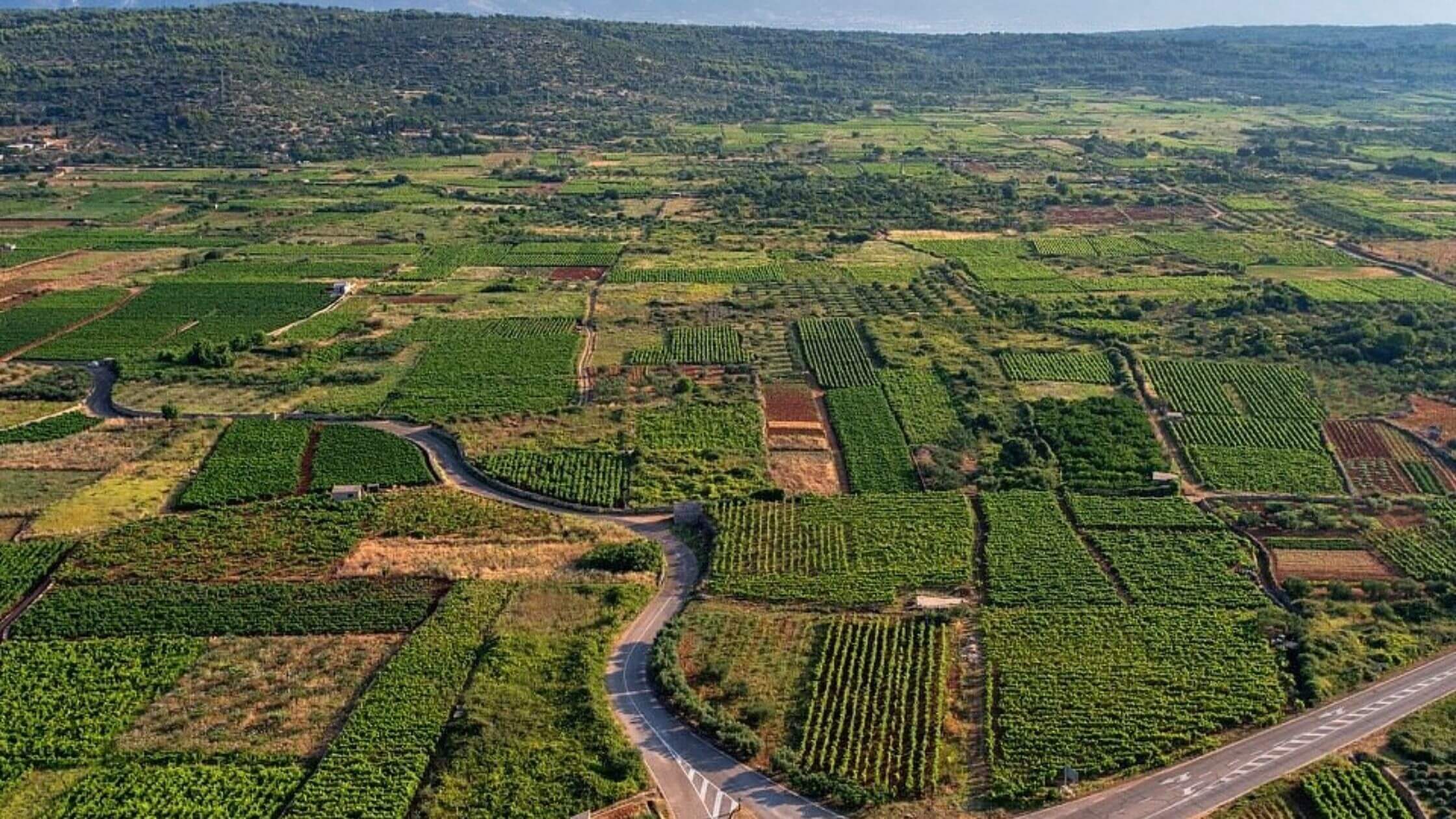
The same crops from centuries ago still grow today. (Image: Visit Hvar tourist board/Facebook screenshot)
For over 2 millennia, locals have maintained the plans in almost their original form, so much so that in 2008, the plains were declared a UNESCO world heritage site for being one of the last remaining ancient Greek agricultural plains in the Mediterranean. Today, they grow the same crops as the 4th century Grecians – olives and grapes, producing some of the best olive oil and wine in the world.
While you can opt to walk around the plains, I’d prefer to rent a bike at one of the many kiosks clustered along the Riva and explore at your own pace. Stop and check out the ancient ruins along the way, sample some olive oil, or enjoy a glass of local wine at one of the restaurants in the area (e.g., Hora, Rugonj, Dionis). The best time to visit is from end-May to mid-July since it coincides with the Lavender Festival, and you’ll be able to avoid the intense heat of high Summer.
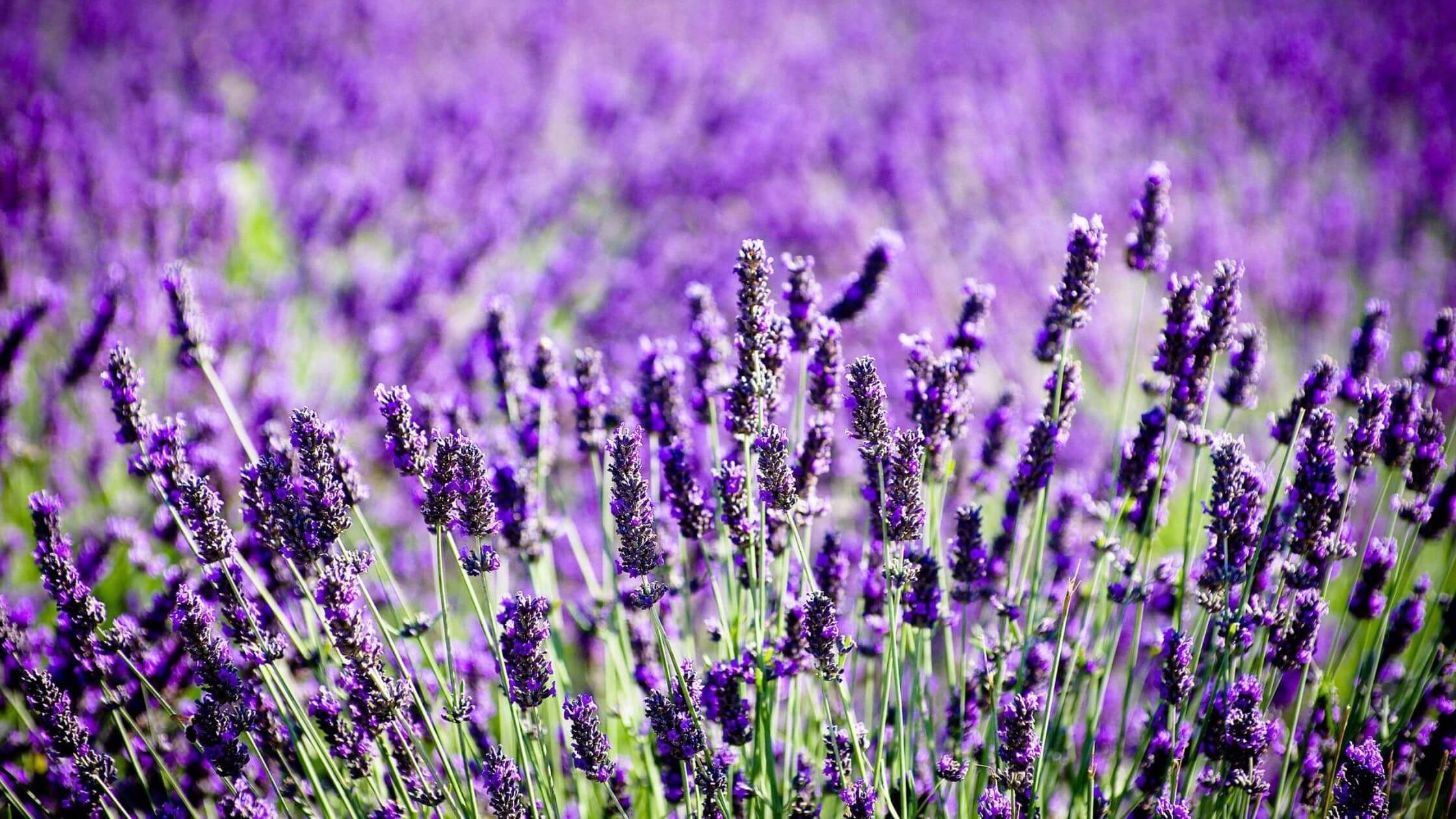
Lavender bushes bloom between May-July. (Image: Pixabay)
5.00 p.m. - 6.30 p.m.
After returning your bikes to the Riva, it’s time to head back to your hotel to complete the check-in process and freshen up for a casual evening in Stari Grad.
6.30 p.m. - 8.00 p.m.
For our final activity today, you may want to watch the sunset from Glavica Hill. While Glavica Hill is considered a hike, I’ve made it up with relative ease in just sandals (not the heeled kind though!). The path is well marked, and the entire trail is shaded by Mediterranean pine trees which provides some reprieve from the afternoon heat.
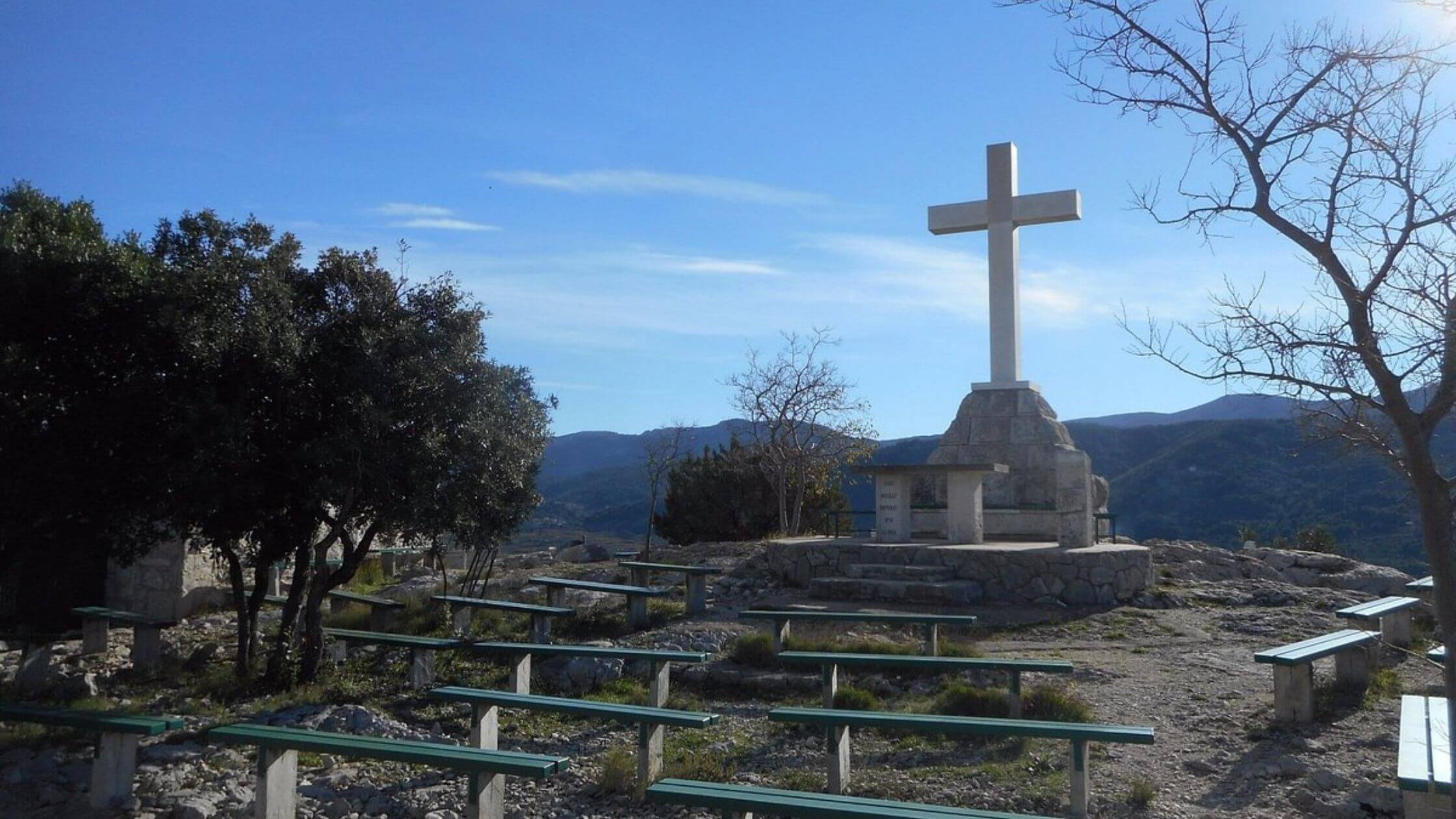
A breathtaking view awaits you at the top of Glavica hill. (Image: Steven D/Tripadvisor screenshot)
Before starting the 20–25-minute walk to the top, head to a grocery store or TISAK to grab a couple of drinks, so that you’ll be able to sit and watch the sunset as it illuminates Stari Grad and the neighboring island of Brač. The sunsets in Croatia are some of the most dynamic I’ve ever seen, with the horizon turning shades of blues, purples, oranges, and pinks before the teal blue of the evening blankets the sky.
8.00 p.m. - 10.30 p.m.
After a day of walking and biking, time to wind down at one of the most authentic, family-run restaurants in the city – Blue Doors Restaurant. With its courtyard seating, you’re treated to stunning views of the harbor, augmented by warm service and a romantic atmosphere, complete with dim lighting and soft music.
Try their seafood plate for 2, piled high with fish and seafood freshly caught that morning, and a Dalmatian signature, the black risotto made with squid ink. No meal is complete without a refreshing bottle of their own Prošip or Graševina, perfect for sipping on a warm summer evening while watching the fishing boats bob along with the gentle waves.
With such an activity-packed day, it might be time to wrap things up in Stari Grad in preparation for Part 2 in Hvar town where we’ll kick start the day with one of my favorite cafes on the island.
How to get from Stari Grad to Hvar by bus?
Getting around Hvar Island without your own ride is quite straightforward. There is only one bus service between Stari Grad-Hvar run by Čazmatrans. Bus services begin at 6.30 a.m. and run 7 times a day for the 30-minute journey, which costs around 25 - 35 KN (€3.50 - €5) per trip which you pay with cash when you board.
You may have noticed that our 24 hours in Stari Grad did not allocate any beach time in the crystal waters of Hvar Island, but the fun’s not over! I promise there’ll be plenty of time in the sun and sea when we reach Hvar Town. So, continue to watch this space for suggestions on spending 24 hours in Hvar Town!
(€1 = 7.54 kuna)
For more on travel in Croatia, follow TCN's dedicated page.
Meet Croatia's UNESCO World Heritage Sites: Stari Grad Plain on Hvar
November 27, 2019 - Filipa Marusic continues her look at the considerable UNESCO heritage in Croatia. Next up, World Heritage Site the Stari Grad Plain on Hvar.
The Stari Grad Plain is a cultural landscape that has remained almost the same since the Ionian Greeks came from Pharos in the 4th century BC. This heritage has been part of the UNESCO World Heritage list since 2008. It showcases the ancient geometrical system of land division used by the ancient Greeks called the “chora” which has remained intact over 24 centuries.
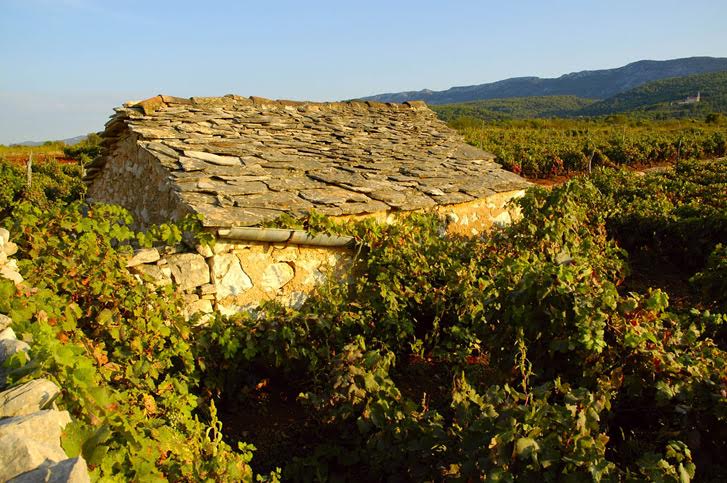
The agricultural activity in the chora was always here and based on grapes and olives the same as it was set up by the ancient Greeks 2400 years ago. The shape of the land division is the same, and the structures built by dry stone walling are authentic and reused throughout time. Additionally, this is a unique example of the land parcel system introduced by the Greeks. The cadastral division of the Stari Grad Plain is one of the best-preserved examples of Greek ancient culture in the entire Mediterranean. Despite all the historical and political changes over the centuries and multiple divisions of the plain, the Greeks set the structure. The Greek chora is embodied in the dry stone wall, which marks the land division. All later divisions of the land – Roman, medieval, or newer were always respecting the Greek shape and had the same dry stone walling technique. There is evidence of all different cultures who used the plain throughout time. The evidence is different archaeological findings dating all periods, from pre-history to medieval times.
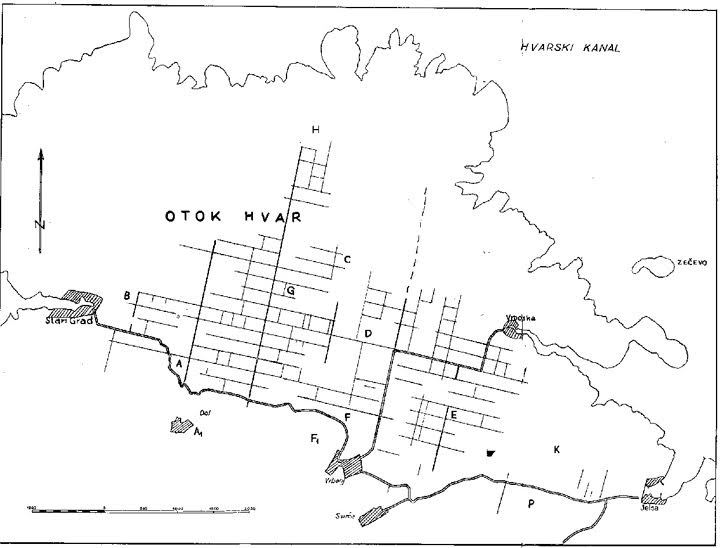
The Stari Grad Plain is the biggest and the most fertile plain on the Adriatic islands. It had and still has its agricultural use, and local people grow the same cultures – olives and grapes. Archaeological findings prove the local inhabitants had their faith in the fruitfulness of the plain. In medieval times the plain was under the protection of the patron saint of Hvar diocese St. Stephen. The Hvar statute from 1331 mentioned the plain, and it listed roads and borders of the plain and several place names for places with later discovered archaeological evidence. The Stari Grad Plain changed its names according to how its owners changed. Different names include Greek Xωpa Φapoυ, Roman Ager Pharensis, medieval Campus Sancti Stephani, or today Stari Grad Plain.

The precise boundaries set by the Greeks in the plain are the work of villagers who used dry stone walling techniques even in ancient times. Some are just a barrier between two different lands, while others are quite wide and were in use as paths. Around the plain, there are circular stone houses called “trimi” or “bunje” used in the past as storage and shelter during bad weather. While the land here is fertile, the Mediterranean climate often has dry weather, so the plain has several reservoirs for collecting and saving the rainwater. All the different buildings located in the Stari Grad Plain range from the remains of farmhouses and drystone shelters to churches and chapels are there to prove the reusability of all the elements through centuries.

The Greek origin is visible in the very island name coming from Greek word Pharos (Faros), which ancient Greeks from Pharos island in the Aegean Sea gave when they arrived at where is now Stari Grad in 4 century BC. There were about 1000 inhabitants sent to colonise Hvar island. When Pharos became an independent Greek town polis in the 1st century BC, the Romans named the island Faria. In early medieval times, when Croatians came to the islands, they took over the names which locals used and adapted it to the Slavic language – this is how we have Hvar island name. Most Greek colonisations happened from 8th to 5th century BC, and there were about 700 colonies in the Mediterranean and Black Sea. At that time, there were just a few Greek colonies in the Adriatic Sea, so Adriatic islands were the only uncolonised part of the west from Greece in the 4th century BC.
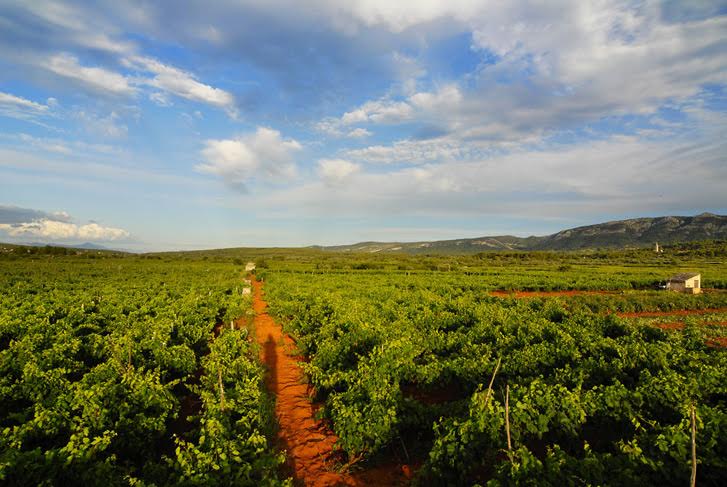
There is some prehistoric evidence dating back to Neolithic times (6000-3000 BC), which proved this fruitful area was inhabited much earlier than the Greeks. Additionally, there are findings from the Bronze and Iron Age as evidence the Greeks found native inhabitants on Hvar when they first came. Also, at the time, Illyrian tribes lived in this area, and islanders cooperated with Illyrian tribes on the mainland. When Greeks from Pharos came to Hvar, apparently, there was at first peaceful agreement with local inhabitants. Later on, this agreement wasn’t respected, so local natives decided to attack the colony. As the land division was one of the main tasks of colonisation, this was probably one of the reasons for the conflict. We also know that the Greeks built the town on the coast with fortifications. This fact, along with the land division, meant then needed a lot of money at the time to do that.
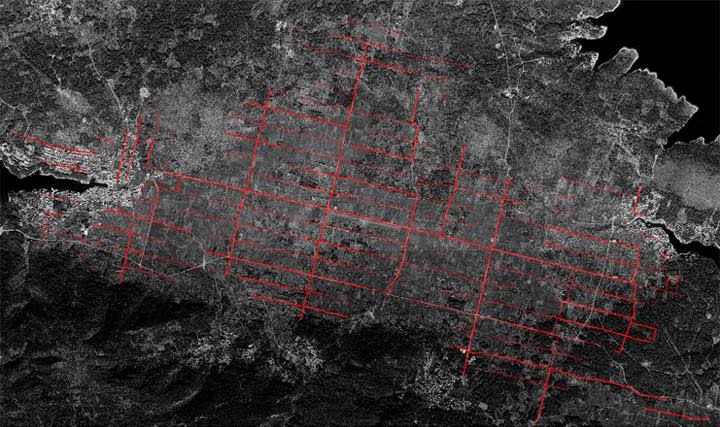
The cadastral plan and air image of the plain show that the border around the land has a size of about 180x900 m, no matter the division within this land part. The ancient Greek measuring system contains the measures that were in use. 180 m was the length of the Greek stadium while 900 m have five stadia. The average width of the roads was 10 Greek feet or about 3 meters. The Greeks used different sizes for this measure, but here research discovered it was 0,3026 m, and it was probably a standard measure in 4th century BC for some Greek towns. All the divided land in the direction east-west are parallel and break in one central point in the direction north-south. In ancient Greece, this point was called “omfalos” and represented the central unit where different paths meet. The land measure excluded the connecting roads. The base for the plain is karst terrain with several slopes where the land can quickly erode, and this is why people built so-called terraces or support walls. The terraces and dry stone walling is a valuable heritage people nurtured for years.
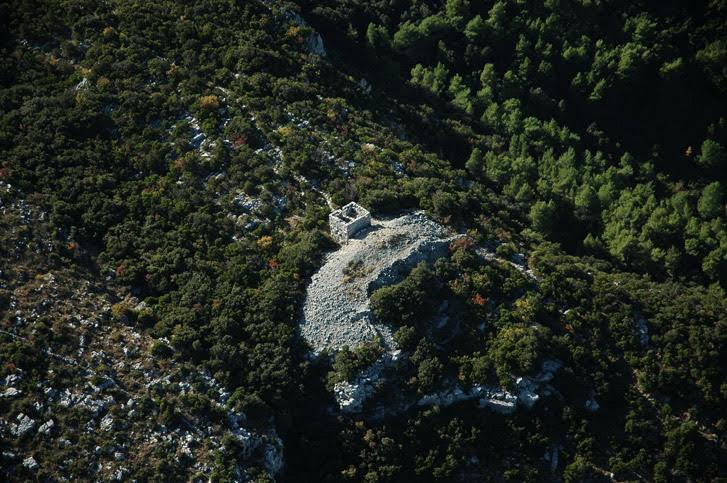
The chora had farmhouses, but there are just a few found as they were probably the foundation for Roman villa rustica. In the area, two guard towers protected the land. Additionally, there were perhaps temples dedicated to gods of fertility. There weren’t many Greek inscriptions in the area, but there is a stone fragment where it said “Border of the land of Matija, son of Piteja” which meant people of the time respected their land borders. Another larger inscription is evidence that local people of Pharos set three members to Greek Pharos to ask for money to renew the city, which proves they had a democratic setup. The local Greeks also were equal in terms of land amount and had similar housing.

The ancient Pharos even had its mint, but as Greek Paros didn’t have their own money, they used money from Greeks on Syracuse as inspiration. There are numerous versions of money from this area, as well as coins from different regions proving there were plenty of trades going on in ancient times. The ancient vessels and vases from the area show they were imported from Greece or locally made. The end of Pharos ancient Greek town is not known, but there is evidence of Roman building activity from 1st century BC.
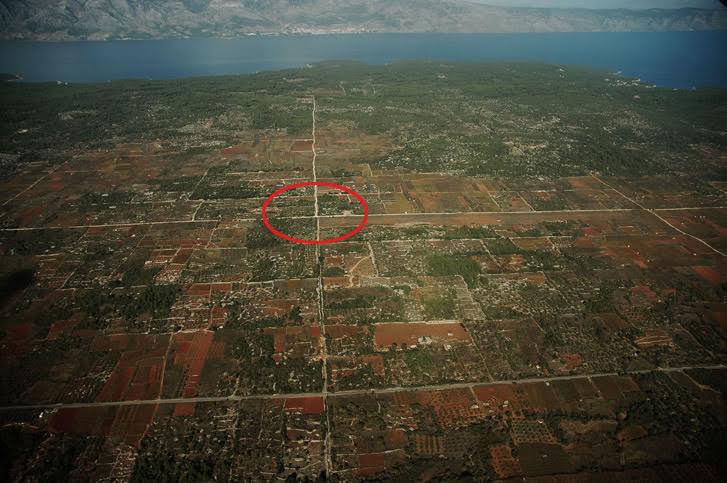
In ancient times the most important agricultural products were wheat and olives. The plain area divided this way gave good income to people – if they grew just wheat, the market surplus was between 41000 and 157000 silver drachma (one drachma was the daily income of the worker and its equivalent of approximately 30 EUR). The Greeks planted olive trees and produced wine, figs, rosehip, almonds, carob, and other cultures. They went fishing, hunting, and were beekeepers. They also had cattle for food and for towing and carrying loads. The different amphora remains proved there was active production of wines and olive oil. The ancient Greeks probably had food supplies and stored the food for the time of war and as protection against robberies.
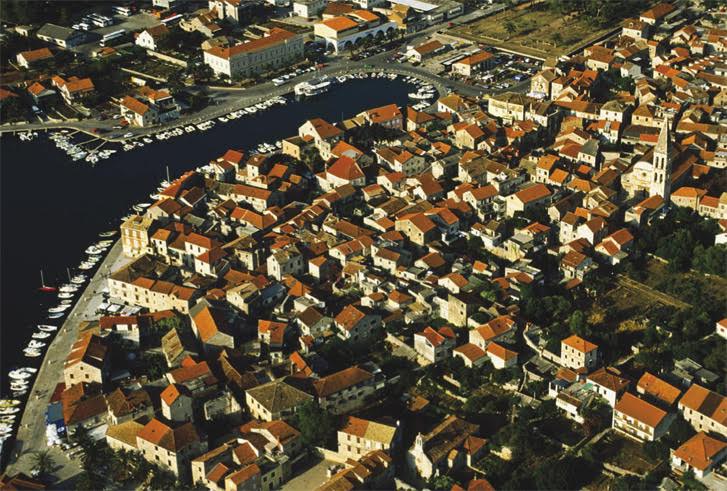
Toward the end of ancient times, Hvar island was quite well inhabited, especially the Stari Grad Plain area. As already mentioned, there are some early Christian churches which have medieval artifacts as well as circular dry stone shelter buildings from different periods. The Stari Grad itself has a range of different structures from the late ancient period to the end of the 19th century, which together create urban complex. From medieval times the bigger ancient lands were divided into smaller parts, and they reflect the changes through centuries.

When it comes to everyday life around Stari Grad plain was always connected to agricultural works depending on the season. The Hvar statute from 1331 gives the oldest written advice on agricultural work. Even today, the same rules are used in agriculture – the first warmer days after winter are for work, and this is the hardest part, and then summer is to keep the vineyard from any diseases. September is the month of harvest, followed by winemaking in October. November is olive picking, and December and January are for rest. From all the agricultural cultures, there are mostly grapes and olives but also lavender and rosemary, as well as other fruits grown here from ancient times. When some of the vineyards were destroyed at the beginning of the 20th century, lavender became part of Hvar's agricultural heritage. Rosemary is another aromatic herb growing on Hvar and other parts of the Adriatic coast. The vineyards and winemaking heritage are part of local identity for centuries. The authentic Dalmatian variety plavac mali grows here as well as indigenous Hvar variety of white wine bogdanuša and prč and red wine drnekuša. Olive trees were probably on Hvar even before the arrival of Greeks, but their arrival meant the beginning of cultivated olive groves.
The religious celebrations set the time for the biggest local festivities. At Easter time, there is a unique procession Za Križem during the night from Maundy Thursday to Good Friday, which has been the same for more than 500 years going from different villages and towns around the Stari Grad Plain. TCN wrote about this unique UNESCO protected heritage in several pieces. At Christmas time there is kolendanje – groups of children or adults sing old songs with good wishes for the year that is to come in front of the houses of friends or neighbours. The special occasions ask for special meals such as starogrojski paprenjok – a pastry made from honey, flour, olive oil, prošek and different spices. It represents local traditions and uses locally produced ingredients.
If local people didn’t use the Stari Grad Plain, the valuable heritage wouldn’t be at such a good level of preservation. The Stari Grad Plain is the best-preserved example of the Greek land division, and it stayed that way as locals continuously used the land throughout the centuries. The dry stone walls which were built and rebuilt saving the shape of the parcels. The value of the Stari Grad Plain encouraged local and state authorities to work on the revitalisation of old parts of the plain with planting traditional agricultural varieties and promoting this heritage in the cultural aspect of Hvar tourism. The idea is to keep the same shape and land parcel system set by the Greeks and keep all the paths and routes around the lands the same without the use of any modern building techniques. The idea is to renovate all the buildings according to the traditional way and reuse them for tourism purposes and keep archaeological researches active.
For more information about the Stari Grad Plain, visit the official website.
To learn more about Stari Grad, here are 25 things to know.
The Top 5 Must-See Things in Stari Grad
In honor of Stari Grad’s 2400 years of foundation, we thought we’d bring you the top 5 “must-see” things in this beautiful old town, as chosen by the Tourist Board of Stari Grad.


